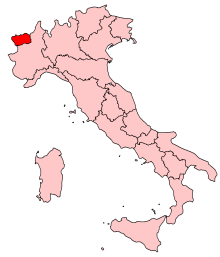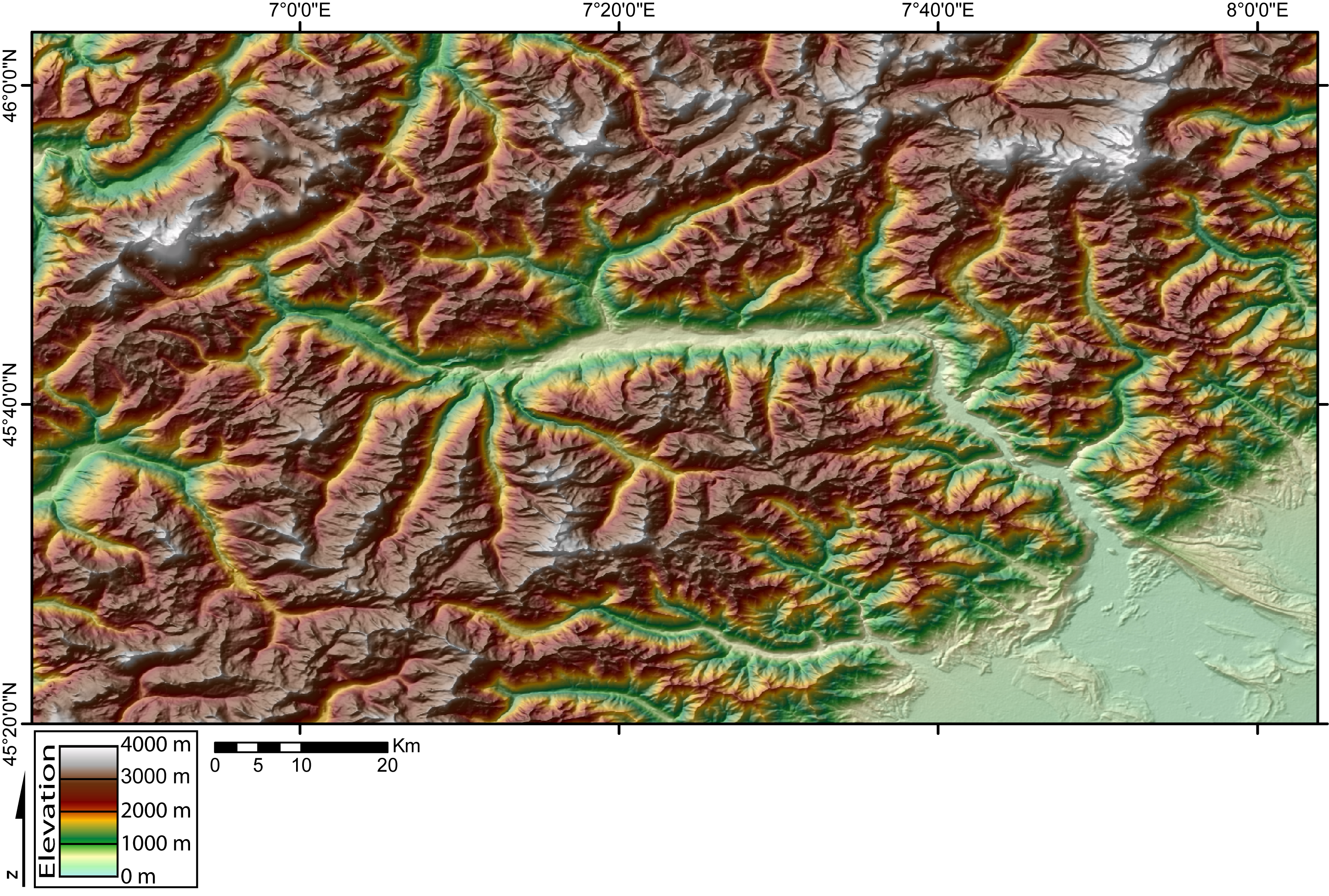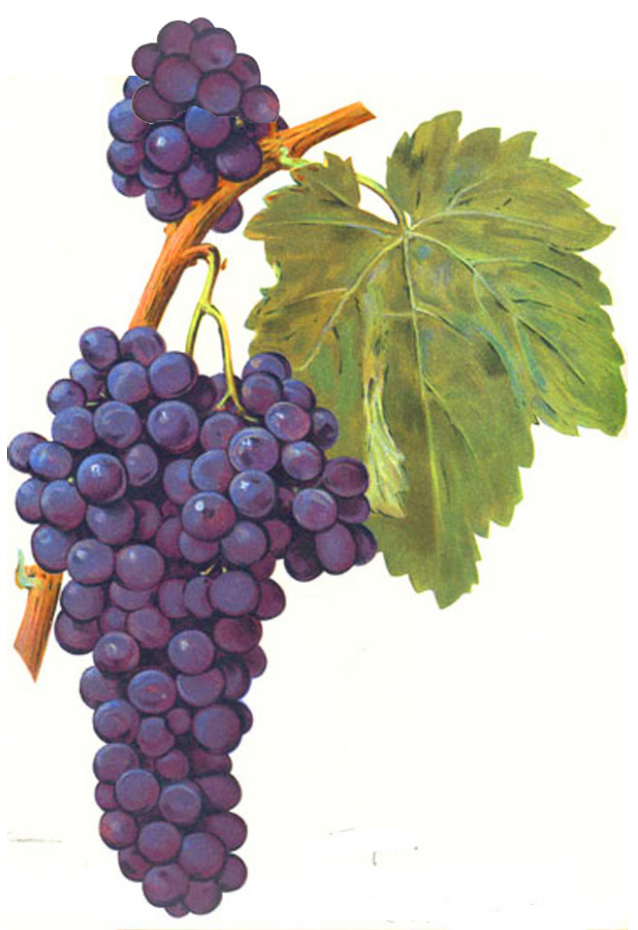|
Chambave
Chambave ( Valdôtain: or ; Issime wae, Tschambuvu) is a town and ''comune'' in the Aosta Valley region of northwestern Italy. The communal territory is crossed by the Dora Baltea (french: Doire baltée). Wine Growers in Chambave produce several Italian wines under the Valle d'Aosta DOC including a rosso, sweet wine Muscat and a straw wine.P. Saunders ''Wine Label Language'' pp. 211-212 Firefly Books 2004 *Chambave rouge - Must contain a minimum of 60% Petit Rouge with Dolcetto, Gamay and Pinot noir making up the rest of the blend. Beyond the Vallée d'Aoste DOC requirement, grapes destined for Chambave rouge must be harvested to a more limited maximum yield of 10 tonnes/ha and be fermented to a minimum 11% alcohol with the six months of aging taking place in wood (usually oak) barrels. *Muscat de Chambave - Sweet white made from the Muscat de Chambave grape. Harvested to a maximum yield of 10 tonnes/ha and fermented to a minimum alcohol level of 11% with three months agi ... [...More Info...] [...Related Items...] OR: [Wikipedia] [Google] [Baidu] |
Vallée D'Aoste DOC
The Valle d'Aosta DOC (or Vallée d'Aoste DOC, in French) is an Italian ''denominazione di origine controllata'' located in the Aosta Valley of northwest Italy. Surrounded by the Alps, the Valle d'Aosta is home to the highest elevated vineyards in all of Europe. The principal winemaking region of the Valle d'Aosta is found along the eastern banks of the Dora Baltea ( fr., ''Doire baltée'') river with the city of Aosta serving as the central winemaking location. The region is divided into three main vineyard areas; the upper valley, Valdigne, the central valley (locally ''Valle centrale'' in Italian, ''Vallée centrale'' in French) and the lower valley, (locally ''Bassa valle'' in Italian, ''Basse vallée'' in French). To the south is the winemaking region of Piedmont. The Valle d'Aosta is Italy's smallest winemaking region both in terms of size and production with only about 330,000 cases produced annually in the region and only 36,000 cases produced under the DOC label. Seventy ... [...More Info...] [...Related Items...] OR: [Wikipedia] [Google] [Baidu] |
Valle D'Aosta DOC
The Valle d'Aosta DOC (or Vallée d'Aoste DOC, in French) is an Italian ''denominazione di origine controllata'' located in the Aosta Valley of northwest Italy. Surrounded by the Alps, the Valle d'Aosta is home to the highest elevated vineyards in all of Europe. The principal winemaking region of the Valle d'Aosta is found along the eastern banks of the Dora Baltea ( fr., ''Doire baltée'') river with the city of Aosta serving as the central winemaking location. The region is divided into three main vineyard areas; the upper valley, Valdigne, the central valley (locally ''Valle centrale'' in Italian, ''Vallée centrale'' in French) and the lower valley, (locally ''Bassa valle'' in Italian, ''Basse vallée'' in French). To the south is the winemaking region of Piedmont. The Valle d'Aosta is Italy's smallest winemaking region both in terms of size and production with only about 330,000 cases produced annually in the region and only 36,000 cases produced under the DOC label. Seventy f ... [...More Info...] [...Related Items...] OR: [Wikipedia] [Google] [Baidu] |
Petit Rouge
Petit Rouge is a red Italian wine grape variety that ampelographers believe is indigenous to the Valle d'Aosta (french: Vallée d'Aoste) region of northwest Italy.J. Robinson ''Jancis Robinson's Guide to Wine Grapes'' pg 136 Oxford University Press 1996 However, there is some confusion about whether Petit Rouge is the same variety as the red Swiss wine grape Rouge de Valais. J. Robinson ''Vines, Grapes & Wines'' pg 210 Mitchell Beazley 1986 The grape is somewhat obscure and is not widely grown outside the Valle d'Aosta where it is primarily a blending variety but some varietal wines are produced. Oz Clarke & M. Rand ''Encyclopedia of Grapes'' pg 167 Webster International Publishers In blends, it adds floral aroma notes and dark color to the wines. Wine regions Petit Rouge is primarily found in the Valle d'Aosta region of northwest Italy between Piedmont and the Alps separating Italy from France and Switzerland. In general, altitude determines which varieties of grapes may ... [...More Info...] [...Related Items...] OR: [Wikipedia] [Google] [Baidu] |
Saint Lawrence
Saint Lawrence or Laurence ( la, Laurentius, lit. "Laurel wreath, laurelled"; 31 December AD 225 – 10 August 258) was one of the seven deacons of the city of Rome under Pope Sixtus II who were martyred in the Persecution of Christians, persecution of the Christians that the Valerian (emperor), Roman Emperor Valerian ordered in 258. Life St. Lawrence is thought to have been born on 31 December AD 225, in Valencia (or less probably, in Huesca), the town from which his parents came in the later region of Aragon that was then part of the Roman province of Hispania Tarraconensis. The martyrs Orentius (Modern Spanish: ) and Patientia (Modern Spanish: ) are traditionally held to have been his parents.Sts. Orentius and Patientia Catholic Online Lawrence encountered the future Pope Sixtus II, ... [...More Info...] [...Related Items...] OR: [Wikipedia] [Google] [Baidu] |
Saint-Laurent-de-Mure
Saint-Laurent-de-Mure () is a commune in the Rhône department in eastern France. Saint-Laurent-de-Mure forms part of the communauté de communes (grouping of villages) in the eastern Lyons area which support one another to provide improved services for inhabitants. INSEE Location This small village lies to the east of 's third largest city, Lyon. Within an easy commute of the city centre, on the first/last exit before the toll road ([...More Info...] [...Related Items...] OR: [Wikipedia] [Google] [Baidu] |
Comune
The (; plural: ) is a local administrative division of Italy, roughly equivalent to a township or municipality. It is the third-level administrative division of Italy, after regions ('' regioni'') and provinces (''province''). The can also have the title of ('city'). Formed ''praeter legem'' according to the principles consolidated in medieval municipalities, the is provided for by art. 114 of the Constitution of Italy. It can be divided into ''frazioni'', which in turn may have limited power due to special elective assemblies. In the autonomous region of the Aosta Valley, a ''comune'' is officially called a ''commune'' in French. Overview The provides essential public services: registry of births and deaths, registry of deeds, and maintenance of local roads and public works. Many have a '' Polizia Comunale'' (communal police), which is responsible for public order duties. The also deal with the definition and compliance with the (general regulator plan), a document ... [...More Info...] [...Related Items...] OR: [Wikipedia] [Google] [Baidu] |
Pinot Noir
Pinot Noir () is a red-wine grape variety of the species ''Vitis vinifera''. The name may also refer to wines created predominantly from pinot noir grapes. The name is derived from the French language, French words for ''pine'' and ''black.'' The word ''pine'' alludes to the grape variety having tightly clustered, pinecone–shaped bunches of fruit. Pinot Noir grapes are grown around the world, mostly in cooler climates, and the grape is chiefly associated with the Burgundy (wine), Burgundy region of France (wine), France. Pinot Noir is now used to make red wines around the world, as well as champagne, Sparkling wine, sparkling white wines such as the Italian wine, Italian Franciacorta, and Wine from the United Kingdom, English sparkling wines. Regions that have gained a reputation for red pinot noir wines include the Willamette Valley (wine), Willamette Valley of Oregon (wine), Oregon; the Carneros (AVA), Carneros, Central Coast (AVA), Central Coast, Sonoma Coast AVA, Sonoma ... [...More Info...] [...Related Items...] OR: [Wikipedia] [Google] [Baidu] |
Town Twinning
A sister city or a twin town relationship is a form of legal or social agreement between two geographically and politically distinct localities for the purpose of promoting cultural and commercial ties. While there are early examples of international links between municipalities akin to what are known as sister cities or twin towns today dating back to the 9th century, the modern concept was first established and adopted worldwide during World War II. Origins of the modern concept The modern concept of town twinning has its roots in the Second World War. More specifically, it was inspired by the bombing of Coventry on 14 November 1940, known as the Coventry Blitz. First conceived by the then Mayor of Coventry, Alfred Robert Grindlay, culminating in his renowned telegram to the people of Stalingrad (now Volgograd) in 1942, the idea emerged as a way of establishing solidarity links between cities in allied countries that went through similar devastating events. The comradeship ... [...More Info...] [...Related Items...] OR: [Wikipedia] [Google] [Baidu] |
Straw Wine
Straw wine, or raisin wine, is a wine made from grapes that have been dried to concentrate their juice. The result is similar to that of the ice wine process, but is a much older process and suitable for warm climates. The technique dates back to pre-Classical times with wines becoming fashionable in Roman times and in late Medieval/Renaissance Europe when wines such as Malmsey ('Malvasia' originally from Greece) and Candia (from Crete) were highly sought after. Traditionally, most production of these wines has been in Greece, the islands of Sicily, Cyprus, Northern Italy and the French Alps. However, producers in other areas now use the method as well. Under the classic method, after a careful hand harvest, selected bunches of ripe grapes will be laid out on mats in full sun. (Originally the mats were made of straw, but these days the plastic nets for the olive harvest are likely to be used). This drying will probably be done on well exposed terraces somewhere near the wine pr ... [...More Info...] [...Related Items...] OR: [Wikipedia] [Google] [Baidu] |
Oak (wine)
Oak is used in winemaking to vary the color, flavor, tannin profile and texture of wine. It can be introduced in the form of a barrel during the fermentation or aging periods, or as free-floating chips or staves added to wine fermented in a vessel like stainless steel. Oak barrels can impart other qualities to wine through evaporation and low level exposure to oxygen.J. Robinson ''Jancis Robinson's Wine Course'' Third Edition pg 91-93 Abbeville Press 2003 History In early wine history, the amphora was the vessel of choice for the storage and transportation of wine. Due to the perishable nature of wood material it is difficult to trace the usage of barrels in history. The Greek historian Herodotus noted that ancient Mesopotamians used barrels made of palm wood to transport wine along the Euphrates. Palm is a difficult material to bend and fashion into barrels, however, and wine merchants in different regions experimented with different wood styles to find a better wood source. ... [...More Info...] [...Related Items...] OR: [Wikipedia] [Google] [Baidu] |
Aging (wine)
The aging of wine is potentially able to improve the quality of wine. This distinguishes wine from most other consumable goods. While wine is perishable and capable of deteriorating, complex chemical reactions involving a wine's sugars, acids and phenolic compounds (such as tannins) can alter the aroma, color, mouthfeel and taste of the wine in a way that may be more pleasing to the taster. The ability of a wine to age is influenced by many factors including grape variety, vintage, viticultural practices, wine region and winemaking style. The condition that the wine is kept in after bottling can also influence how well a wine ages and may require significant time and financial investment.R. Jackson ''"Wine Science: Principles and Applications"'' Third Edition, pp. 431–489, 643–671. Academic Press 2008 .R. Boulton, V. Singleton, L. Bisson, R. Kunkee ''Principles and Practices of Winemaking'', pp. 382–424. Springer 1996 New York . The quality of an aged wine varies significant ... [...More Info...] [...Related Items...] OR: [Wikipedia] [Google] [Baidu] |
Fermented (wine)
The process of fermentation in winemaking turns grape juice into an alcoholic beverage. During fermentation, yeasts transform sugars present in the juice into ethanol and carbon dioxide (as a by-product). In winemaking, the temperature and speed of fermentation are important considerations as well as the levels of oxygen present in the must at the start of the fermentation. The risk of stuck fermentation and the development of several wine faults can also occur during this stage, which can last anywhere from 5 to 14 days for ''primary fermentation'' and potentially another 5 to 10 days for a '' secondary fermentation''. Fermentation may be done in stainless steel tanks, which is common with many white wines like Riesling, in an open wooden vat, inside a wine barrel and inside the wine bottle itself as in the production of many sparkling wines. History The natural occurrence of fermentation means it was probably first observed long ago by humans.H. Johnson: ''Vintage: The St ... [...More Info...] [...Related Items...] OR: [Wikipedia] [Google] [Baidu] |




.jpg)


